May 21, 2025 | 03:05 GMT +7
May 21, 2025 | 03:05 GMT +7
Hotline: 0913.378.918
May 21, 2025 | 03:05 GMT +7
Hotline: 0913.378.918
Vietnam has a diverse climate suitable for growing many different vegetable species, including temperate, tropical, and subtropical vegetables. Most vegetable species have a short growing period, so farmers can grow 2–6 crops/year on many different types of soil and terrain. With diverse growing methods and comparative advantages in production value, farmers prioritize intensive cultivation of vegetables to increase crops, serve the conversion of crop structure, and increase economic efficiency.
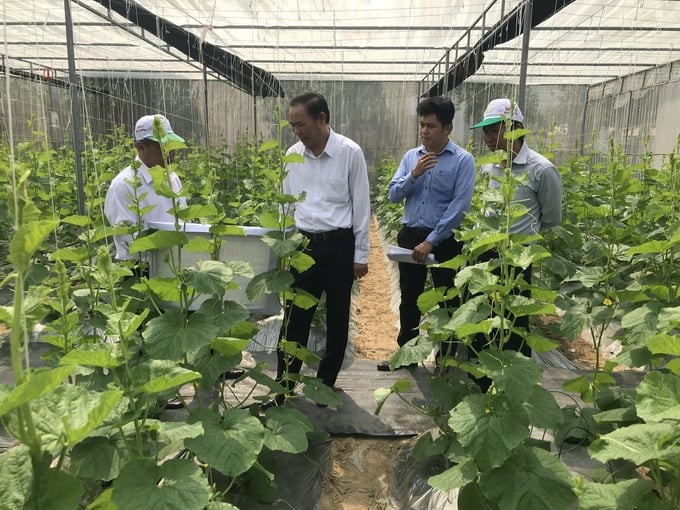
Deputy Minister of Agriculture and Rural Development Phung Duc Tien (second from left) visits the cantaloupe-growing model at ASISOV. Photo: V.D.T.
Currently, many localities in the Southern provinces are converting ineffective rice land to growing vegetables or changing the method from growing vegetables with little investment to higher investment in both facilities and science and technology. However, according to Dr. Ho Huy Cuong, Director of the Agricultural Sciences Institute for Southern Coastal Central of Vietnam (ASISOV), the domestic vegetable seed production system is still weak in terms of seed selection and creation, storage, breeding process, infrastructure, production and distribution capacity, etc. Thus, most domestic vegetable varieties are now dependent on imports. Imported vegetable varieties currently account for about 85% of domestic demand, especially high-end vegetable species that almost all use imported F1 hybrid seeds.
The set of imported vegetable varieties is diverse; many varieties have good adaptability, meeting the tastes of consumers, but there are also varieties with poor adaptability. Particularly, imported seed prices are very high. Meanwhile, the source of domestically produced vegetable varieties only accounts for a small proportion, mainly indigenous and low-value vegetable varieties. Therefore, productivity, quality, and efficiency in vegetable production are not high.
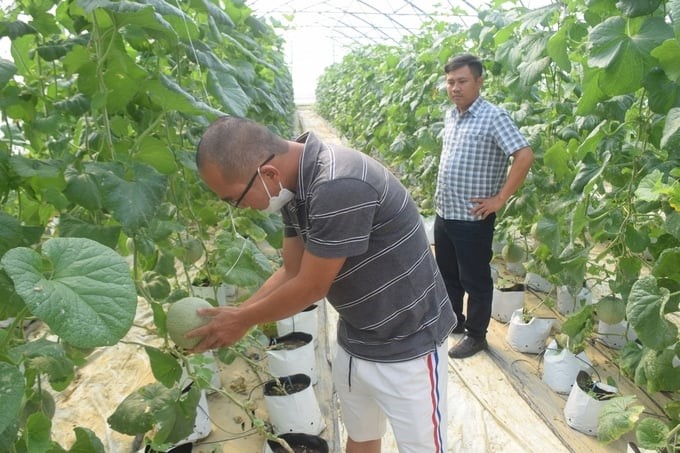
Currently, cantaloupe farms almost all use imported varieties at very high prices. Photo: V.D.T.
Mr. Tran Bao Diep, owner of La'sfarm Garden in Tang Bat Ho town (Hoai An district, Binh Dinh), specializes in growing many types of vegetables and melons to supply markets inside and outside Binh Dinh province. The vegetable and melon varieties he has used in the past few years are all imported varieties grown in nurseries in Da Lat, such as Nova orange tomatoes, Nova yellow tomatoes, Chery red tomatoes, chocolate tomatoes, etc. The cantaloupe varieties Mr. Diep is producing are also imported varieties, such as the Huynh Long cantaloupe variety imported from Malaysia or the Hami and Golden Sun cantaloupe varieties imported from China.
“Imported vegetable varieties are all more expensive than domestically produced vegetable varieties; some varieties are 4-5 times more expensive. For example, the TL3 cantaloupe variety produced in Vietnam is priced at VND 1,000/seed, while Malaysia’s Huynh Long cantaloupe variety costs up to VND 5,000/seed. Previously, some vegetable and melon varieties produced in Vietnam were also present on the market, but now they have gradually disappeared from the market because their quality cannot keep up with seeds produced abroad, so farmers do not trust them for use," said Mr. Tran Bao Diep.
Dr. Vu Van Khue, Deputy Director of ASISOV, said that many imported vegetable and melon varieties are more expensive than domestic varieties. For example, some imported cantaloupe varieties are currently priced at VND 5,000–7,000/seed, but the Hoang Ngan cantaloupe variety selected and created by ASISOV is only sold for VND 1,500–2,000/seed. Meanwhile, the Hoang Ngan melon variety has yield and quality that are no less than those of foreign varieties. Hoang Ngan cantaloupe produces uniform, elliptical-shaped fruits with bright yellow skin when ripe, an average weight of 1.6-2 kg/fruit, and light orange, crispy, and sweet flesh.

Visiting the cantaloupe-growing model at ASISOV. Photo: V.D.T.
The climate in the Southern provinces of Vietnam has two seasons, the rainy season and the dry season, which occur at different times in each ecological region. For example, in the South Central region, the dry season is from February to September, while it is from November to April of the following year in the Central Highlands and from December to April of the following year in the Southeast and Mekong Delta regions.
High temperatures, high lighting intensity, and low humidity during the dry season in the Southern provinces are very favorable conditions for growing subtropical and tropical vegetables all year round. For example, cucurbit vegetable species (cucumber, bitter melon, pumpkin, zucchini, watermelon, honeydew melon, and cantaloupe); Solanum plants (hot pepper, eggplant, and tomato); leafy vegetable species (water spinach, malabar spinach, and amaranth); and the group of spice vegetables (onion, garlic, Chinese onion, basil, beefsteak plant, Ocimum graveolens).
Currently, the Southern provinces have formed concentrated vegetable growing areas in Ho Chi Minh City, An Giang, Dong Thap, Lam Dong, Gia Lai, etc., so there are many conditions to develop into large-scale commercial vegetable areas that can supply the domestic market and export.

Model of growing the aromatic cucumber variety at ASISOV. Photo: V.D.T.
From the above reality, Dr. Vu Van Khue, Deputy Director of ASISOV, said that selecting and creating new vegetable and melon varieties and perfecting the domestic vegetable breeding system to proactively provide vegetable seeds for production are urgent requirements with high practical significance in the current period.
According to Dr. Khue, since 2016, ASISOV has proposed a strategy to research, select, and create F1 vegetable varieties for the Southern provinces on the basis of maximizing the precious characteristics of local varieties, such as aroma, pest resistance, heat resistance, and good quality, combined with imported genetic resources with characteristics of high yield, beautiful design, and long-term preservation ability. As of now, ASISOV has successfully selected and created F1 vegetable varieties such as: aromaic cucumber Thien Huong 1, Thien Huong 2; Hoang Ngan cantaloupe; bitter melon Ha Thanh 1, Ha Thanh 2; pumpkin Duong Long 77, Phuong Mai 77; and purple onion F1.
“Currently, ASISOV is continuing to select, maintain, and preserve diverse vegetable sources, such as cucumber, pumpkin, bitter melon, zucchini, and watermelon, to serve the work of breeding new vegetable varieties for the coming years," Dr. Khue said.
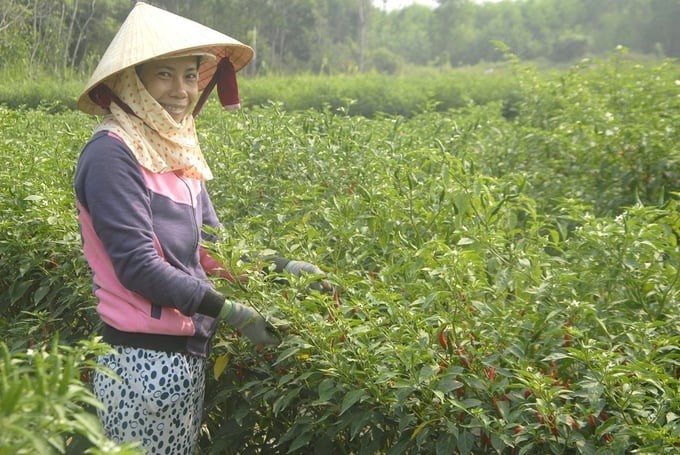
Binh Dinh’s chili growing area reaches more than 2,000 hectares/year; most chili varieties are imported. Photo: V.D.T.
“In the coming time, ASISOV will continue to select and create new vegetable varieties and reasonable farming processes for high yields, good quality, and good resistance to pests, diseases, and heat. In addition, research and perfect the technological process of seed production, from production in the net house to the field; harvesting, separating seeds, drying, preserving, packaging, etc.
The distribution system of selected and created vegetable varieties from the previous period will also be of concern to ASISOV to contribute to being proactive in domestic seed production as well as reducing seed costs for vegetable and melon growers in the Southern region," said Dr. Vu Van Khue, Deputy Director of ASISOV.
Translated by Huyen Vu Thu
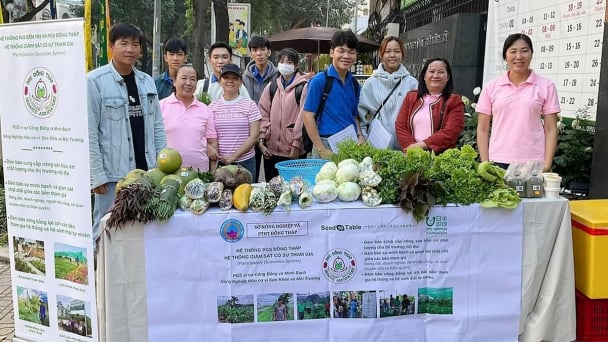
(VAN) Japan's grant aid project contributes to capacity building, promoting organic agricultural production, and fostering sustainable community development in Dong Thap province.
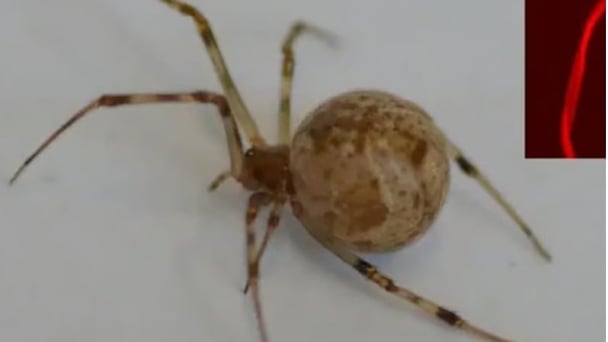
(VAN) For years, the CRISPR-Cas9 genome technology has been reshaping genetic engineering, a precision tool to transform everything from agriculture to medicine.

(VAN) Vietnam aims to become a 'leader' in the region in the capacity and managing effectively soil health and crop nutrition.
![Reducing emissions from rice fields: [Part 1] Farming clean rice together](https://t.ex-cdn.com/nongnghiepmoitruong.vn/608w/files/news/2025/05/05/z6509661417740_a647202949c539012a959e841c03e1d3-nongnghiep-143611.jpg)
(VAN) Growing clean rice helps reduce environmental pollution while increasing income, allowing farmers to feel secure in production and remain committed to their fields for the long term.
/2025/05/19/5136-1-144800_230.jpg)
(VAN) The Nghe An Provincial People's Committee has just approved the list of beneficiaries eligible for revenue from the Emission Reductions Payment Agreement (ERPA) in the North Central region for the year 2025.
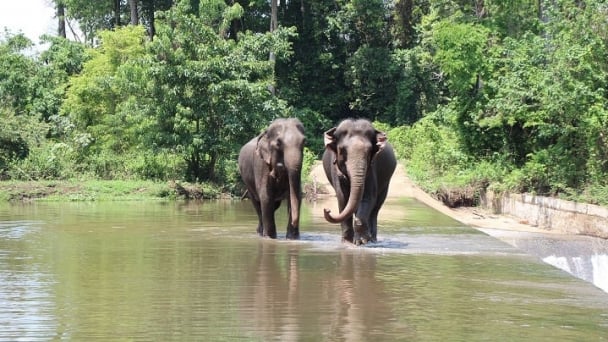
(VAN) 14 out of 35 domesticated elephants in Dak Lak province have had their living conditions improved, with 11 of them currently participating in the non-riding elephant tourism model.
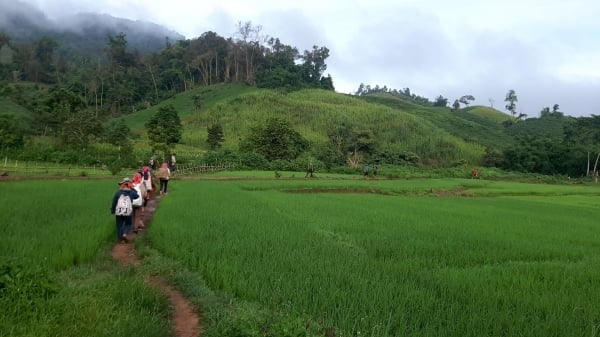
(VAN) Muong Nhe Nature Reserve hopes that being upgraded to a national park will lay the foundation for forest protection efforts to be carried out in a systematic, modern, and sustainable manner.